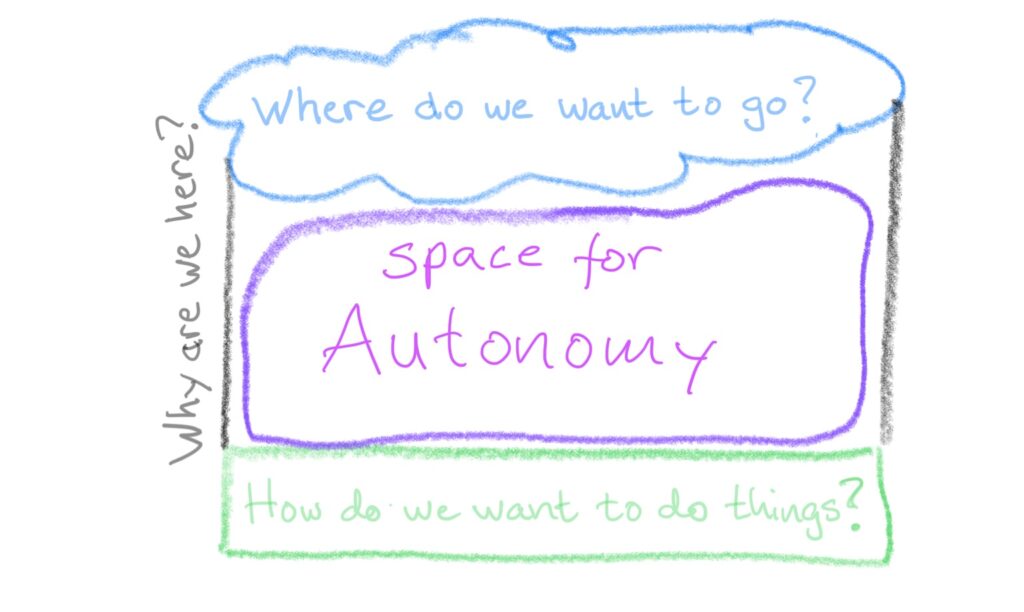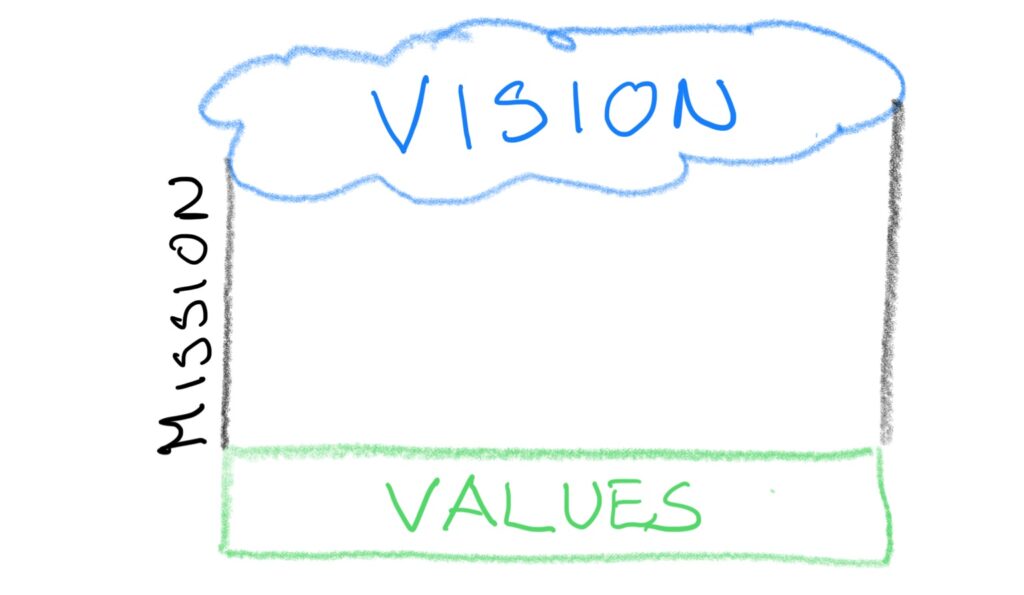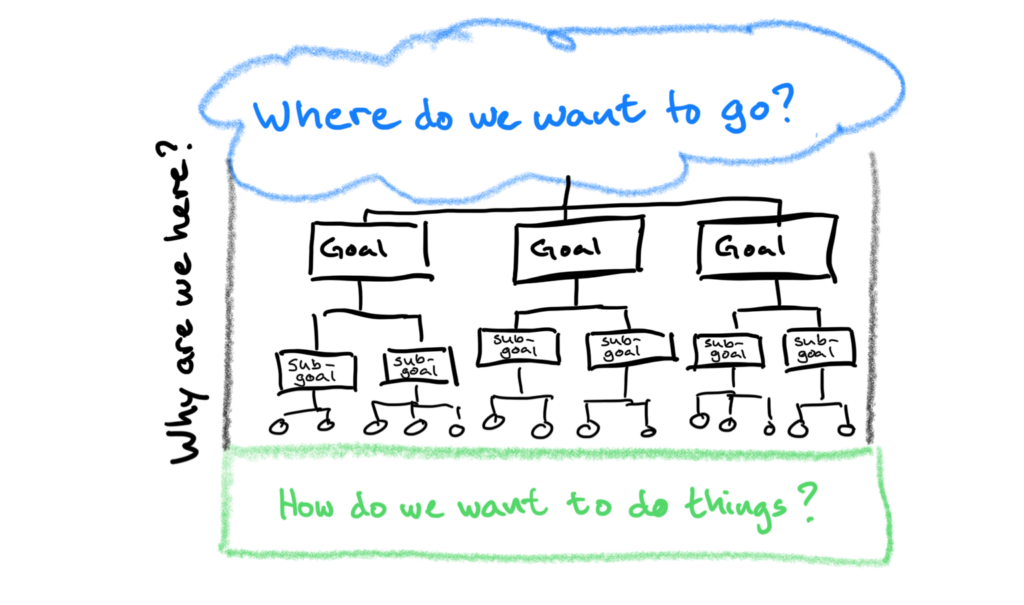If you want to engage people in any kind of change then decades of research suggest that your chance of success improves drastically if you first clarify the answers to the questions [1] where do we want to go?[2] why are we here?, and [3] how do we want to do things?

You will find versions of this frame in the most renown literature on Empowerment, Transformational leadership and Motivation as well as personal development and teamwork. Sometimes the answers to the questions are labelled things like Vision, Mission, Purpose, values, principles and “Your Why”. But in the end it all comes down to the answers to the 3 questions.
This transformative frame creates a space where people can be autonomous, and creative in coming up with ways to get closer to the shared goals (the answer to: Where do we want to go?)

When the frame is clear and shared I have seen teams, especially in NGO’s and start-ups overcome enormous barriers. The frame seam to create unparalleled drive and motivation and this comes as no surprise as it is a central part of the “Transformational Leadership” concept which is one of the most researched and scientifically validated concept within the field of Leadership and change.
In more academic terms you can say that the transformative frame helps to balance autonomy and alignment so that you can release the knowledge, motivation and experience in your team/organisation to reach your long term goals.
On the personal level you will find different versions of this frame in the world’s most used personal leadership models, and programs, where personal vision, mission and values are common key components.

In todays rapidly changing world where you and your organisation are subjected to change in multiple ways the answer to these questions are vital. Without them your environment will be evolving while you will most likely be stuck in a place of stagnation, internal conflict and self-doubt. However, by answering these questions collaboration and creativity can flourish, and if you combine the frame with the other Leadership Backbone skills (Perspective Taking and Psychological safety) you will quickly start to leverage change in your environment to progress towards your goals.
In practice this means that when you go into a collaborative meeting with 2 or more departments you start by aligning [1] why are we collaborating here today? [2] What goals are we trying to reach? And [3] How do we want to behave and interact during our collaboration? It doesn’t have to take a long time, but the answers should be clear to everyone.

Also it means that all team’s have goals and strategies based on the team’s transformative frame (Why does this team exist?, What are we aiming for? and; How do we want to work together to reach our goals?)

If you want to succeed in times of transformation, or if you want to drive transformation your self, start by sketching up a first iteration of a transformative frame for your team or project. It’s not rocket science. My suggestion is to start with a few goals that are shared and motivating and then start making plans based on it. The key is to define a future state that is desirable i.e. Where do we want to go? Iteratively you can improve and define your answers to the questions. It doesn’t matter if it is a catchy slogan or a half page document, as long as it is shared and clear to everyone. This is what I did when I started as Chief Strategy Officer at the NGO Fryshuset, and the creativity and transformative power that was released the following years changed the way Sweden, and large parts of Europe, today work with honor related suppression, de-radicalization of young people and defectors from organised crime. I will never take credit for the 1000’s of fantastic individual achievements during those years, but I still (15 years later) get feedback that the frames and plans we made during our “Goal and Vision”- process was the start of an incredible development journey.
So, to end this post I just want to encourage anyone who wants to be a great leader and changemaker to always make sure you know the answer to the questions, and more importantly help others to understand the answers. It doesn’t matter if it is a meeting, a team, a project or a full organisation. Make sure you can always stop and know [1] why are we here?, [2] where do we want to go? and [3] How do we want to do things? At first it will feel a bit awkward, but after a while it will become a habit, and it is a skill you will improve.

And again, combine this frame with perspective taking and psychological safety (the other Leadership Backbone skills)and you will be set to succeed in todays complex and rapidly changing world.
